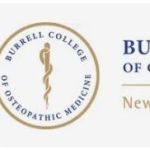The Wright State University Boonshoft School of Medicine was founded in 1974 and is one of the oldest medical schools in Ohio. It is also one of the most highly respected medical schools in the country. The school was founded as a result of a partnership between Wright State University and the Dayton Community Health Council to address the need for more physicians in the region. The school was named after Dr. Wilbert Boonshoft, a leading figure in local medicine and community health at the time. Since its founding, Wright State has grown to become one of the largest medical schools in Ohio and is now ranked among the top 50 medical schools nationally by U.S. News & World Report.
The Boonshoft School of Medicine has a strong focus on primary care, with an emphasis on rural medicine, family practice, internal medicine, pediatrics and other areas related to primary care practice. The school also offers specialty programs such as geriatrics and sports medicine that are designed to prepare students for future careers in those fields. Additionally, Wright State offers various joint degree programs that combine its medical school curriculum with degrees from other universities such as law or business administration. This allows students to gain an even broader understanding of healthcare issues and systems that will help them become successful professionals after graduation.
Wright State University, abbreviated as WSU, is one of the top-ranked U.S. medical schools located in Dayton, OH. Keep reading to see admissions application information including average GRE scores, admissions selection factors and dual degree programs of Wright State University.
PO Box 1751
Dayton, OH 45401-1751
(937) 775-2934
Admissions E-mail: som_saa@wright.edu
Web site: http://www.med.wright.edu
Electronic application: https://somms2.med.wright.edu/saa/oasys/login.asp
Fall 2008 Admissions Information
AMCAS application accepted? Yes
Earliest application date: 06/01
Application deadline: 11/15
Oldest MCAT considered: 2005
Application fee: $45
Director of admissions: Stephen E. Peterson
Does this school ask for a secondary application as part of the admissions process? Yes
This school requires undergraduate work in these subjects in order to apply: biology, English, organic chemistry, inorganic (general) chemistry, physics, mathematics, general chemistry
Is a personal interview required for admission? Yes
Are interviews conducted at the medical school? Yes
Acceptance notice to regular application for the 2007-2008 first-year class:
-Earliest date: October 15
-Latest date: August 1
Applicant’s response to acceptance offer for the 2007-2008 first-year class:
-Maximum time in weeks: 2 weeks
-Does the school consider requests for deferred entrance? Yes
-Deposit to hold place in class: None
-Deposit due: N/A
-Deposit refundable prior to: N/A
-Starting month for the class of 2007-2008: August
Early Decision Plan application period for the 2007-2008 first-year class:
-Does the school have an Early Decision Plan (EDP)? Yes
-EDP application period begins: June 1
-EDP application period ends: August 31
-EDP applicants notified by: October 1
Fall 2005 Admissions Statistics
Wright State University Boonshoft School of Medicine has a competitive admissions process. The school typically accepts around 250 students each year out of the thousands that apply. The average GPA for accepted applicants is 3.7, with a median MCAT score of 512. The school looks for applicants who have strong academic credentials, demonstrate leadership ability and have relevant extracurricular activities. Additionally, they look for individuals who have an understanding of the medical field and a commitment to serving others. The admissions committee also considers letters of recommendation and personal interviews as part of their decision-making process.
The admissions team at Wright State University Boonshoft School of Medicine recognizes the importance of diversity in its student body, so they consider an applicant’s background in addition to their academic credentials when making decisions about admission. They also prioritize candidates from rural or underserved areas as part of their commitment to providing quality healthcare to all communities across Ohio and beyond. To ensure that all students receive a fair consideration during the application process, the school reviews each application holistically before making any decisions about admission.
| Applied | Interviewed | Accepted | Enrolled | |
| Total: | 2,841 | 447 | 198 | 100 |
| In-state: | 964 | 392 | 180 | 89 |
| Out-of-state: | 1,877 | 55 | 18 | 11 |
| Women: | N/A | N/A | N/A | 65 |
| Minorities: | N/A | N/A | N/A | 25 |
| International: | N/A | N/A | N/A | 0 |
Acceptance rate: 7.0%
GPA
Average undergraduate GPA: 3.57
MCAT
Overall score (composite): 9.1
Verbal reasoning: 9.2
Physical sciences: 8.7
Biological: 9.4
Writing: O
Undergraduate Majors
Biological sciences (biology, microbiology, zoology, etc.): 62%
Physical sciences (biochemistry, chemistry, engineering, etc.): 19%
Non-sciences (sociology, economics, English, etc.): 10%
Other health professions (nursing, pharmacy, etc.): 3%
Mixed disciplines and other: 6%
|
Combined Degree Programs
Combined degree programs offered: M.D./Ph.D., M.D./M.B.A., M.D./M.P.H.
Does the school have a combined college/M.D. program? No
Number of years to complete combined college/M.D. program: N/A
Web site for combined college/M.D. program: N/A
Selection Factors
Details on the policies, preferences, criteria, factors and procedures used in the M.D. admission process:
(Data appear as originally submitted by this school)
The Admissions Committee reviews applications according to established policies. Preference is given to Ohio residents. To be considered an Ohio resident an applicant or their legal guardian must have resided in Ohio for the twelve months prior to September of the application year. Non-residents of Ohio are also considered. An applicant must be a citizen of the United States or hold a permanent resident visa or an I-94 form from the US Department of Homeland Security. The Committee looks for evidence of intellectual ability, dedication to human concerns, communication skills, maturity, motivation, and potential for medical service in an under served area of Ohio. One’s academic load, curriculum, GPA, MCAT scores, extracurricular activities, and work experiences are considered.








